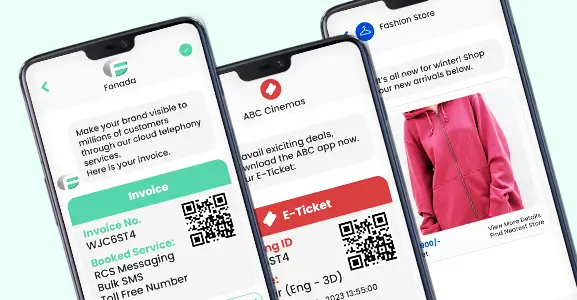What Is Brand Awareness?
Brand awareness denotes consumers’ acquaintance with a brand’s name, logo, or imagery. It signifies that a brand has established a presence in the cultural or social consciousness. Successful brands achieve global brand awareness to the extent that their names become part of everyday language, like “Googling” something or using a “Band-Aid” as a generic term for a bandage. Brand awareness is crucial as it is the initial step in the buying process.
Without brand awareness, consumers are unlikely to consider a brand for purchase. By increasing brand awareness, businesses can attract customers intentionally rather than relying on chance encounters. Brand awareness and business communication go hand in hand because communication makes brand awareness possible. The brand’s growth is highly probable with marketing, sponsorships, social media, affiliation, and more brand awareness strategies.
Why Brand Awareness Is Important ?
- Customer Recognition: Brand awareness ensures that customers can recognize and identify your brand. When consumers are familiar with your brand, they are more likely to consider it when making purchasing decisions.
- Trust and Credibility: Brands that are well-known and widely recognized often enjoy greater trust and credibility among consumers. People tend to trust brands they are familiar with, which can lead to increased customer loyalty and repeat business.
- Competitive Advantage: In a competitive market, having strong brand awareness can give your brand a competitive edge. When consumers have multiple choices, they are more likely to choose a brand they recognize over an unfamiliar one.
- Perceived Value: A well-known brand is often associated with higher perceived value. Consumers may be willing to pay a premium for products or services from a brand they trust and recognize.
- Word-of-Mouth and Referrals: Customers who are aware of your brand are more likely to recommend it to others through word-of-mouth or referrals. This can lead to organic growth and an expanded customer base.
- Marketing Efficiency: Effective brand awareness can make your marketing efforts more efficient. When people are already familiar with your brand, it’s easier and less expensive to market to them. It can reduce the cost of customer acquisition.
- Brand Loyalty: Brand awareness contributes to brand loyalty. When customers have a positive experience with a brand they know, they are more likely to become loyal customers, making repeat purchases and advocating for the brand.
- Expanding Market Share: As your brand awareness grows, you can potentially expand your market share. With a larger share of the market, you have the opportunity to increase sales and revenue.
- Attracting Talent: A well-known and respected brand can attract top talent. Job seekers are often more interested in working for companies with a strong brand reputation.
- Long-Term Sustainability: Brands with high levels of awareness are often more resilient in the face of economic downturns or industry changes. Consumers are more likely to stick with brands they trust during challenging times.
- Brand Extensions: Strong brand awareness can support brand extensions, allowing you to introduce new products or services under the same brand umbrella with a higher chance of success.
- Global Expansion: If you plan to expand your business internationally, having a well-known brand can make the process smoother. Global consumers may already be familiar with your brand, making market entry more accessible.
Scope Of Brand Awareness
The term “scope of brand awareness” refers to the extent and reach of a brand’s recognition and familiarity among its target audience and the general public. It encompasses various aspects and considerations related to how well a brand is known and perceived. Here are some key elements that contribute to the scope of brand awareness:
- Geographic Scope: This aspect refers to where the brand is recognized. Is it known only in a specific region, city, or country, or does it have global recognition?
- Demographic Scope: Brands may have different levels of awareness among different demographic groups. Understanding which demographics are most aware of the brand can help in targeting marketing efforts effectively.
- Industry or Niche: Some brands are well-known within a specific industry or niche but may not have much recognition outside of that context. Their scope of awareness is limited to a particular domain.
- Online and Offline Presence: The scope of brand awareness can differ between online and offline channels. Some brands may be highly recognized on social media and the internet but less so in traditional media or physical locations.
- Competitive Landscape: The awareness of a brand can also be evaluated in comparison to its competitors. How does the brand’s awareness stack up against others in the same market or industry?
- Consumer Segments: Different segments of a brand’s audience may have varying levels of awareness. For example, current customers might be more aware of the brand than potential customers.
- Depth of Awareness: It’s not just about whether people recognize the brand name; it’s also about what they associate with it. Do they know the brand’s products, values, or unique selling points?
- Brand Equity: Brand awareness is closely tied to brand equity, which includes factors like brand reputation, trustworthiness, and emotional connection. A brand with a strong positive image typically has a broader scope of awareness.
- Marketing Efforts: The scope of brand awareness can be influenced by marketing efforts such as advertising, promotions, and public relations. The more a brand invests in marketing, the wider its scope of awareness may become.
- Word-of-Mouth and Social Sharing: Customers and fans can also contribute to the scope of brand awareness through word-of-mouth recommendations and sharing brand-related content on social media.Measuring the scope of brand awareness is crucial for businesses because it provides insights into how well their branding efforts are performing and helps them make informed decisions about future marketing strategies. Brands often use surveys, market research, social media analytics, and other data sources to assess and track their brand’s awareness over time.
Four Levels Of Brand Awareness
Brand awareness can be categorized into four primary levels, each representing a different degree of familiarity and recognition among consumers. These levels help businesses understand where their brand stands in terms of awareness and can guide their marketing efforts accordingly.
The four levels of brand awareness are:
Brand Recognition:
- At this level, consumers can identify the brand when exposed to its name, logo, or other visual cues.
- Brand recognition indicates that the brand is known to consumers, but they may not have in-depth knowledge about its products or services.
- It’s the first step toward building stronger brand associations.
Brand Recall:
- Brand recall occurs when consumers can remember the brand spontaneously without any prompting.
- It goes beyond recognition, as consumers actively recall the brand from memory.
- This level of awareness indicates that the brand has made a more lasting impression on consumers.
Top-Of-Mind Awareness:
- At this level, a brand is the first one that comes to mind when consumers think about a particular product or category.
- Achieving top-of-mind awareness means that the brand is the go-to choice for consumers in that category.
- It reflects a strong and prominent position in consumers’ minds.
Brand Salience:
- Brand salience represents the highest level of brand awareness, where a brand is not only top-of-mind but also carries strong associations with specific attributes, emotions, or benefits.
- Consumers readily connect the brand with its unique qualities or value propositions.
- Brand salience is often associated with strong brand loyalty and preference.
Impact Of Brand Awareness
The first and prime impact of brand awareness is to build brand equity. Regarding other impactful aspects of brand awareness, the following benefits make brand awareness planning important for all business enterprises.
- Customer loyalty: Established brands enjoy the benefit of customer loyalty, allowing them to make occasional mistakes and still maintain customer support and forgiveness.
- Emotional connections: Strong brand awareness fosters customer retention by creating a sense of confidence and optimism. Customers develop emotional bonds with well-known brands, leading to repeat purchases and a willingness to pay more.
- Increased sales: Customers tend to choose brands they are familiar with, resulting in higher market share and increased sales compared to competitors. It leads to more significant income generation.
- Referral acquisition: A strong brand with high awareness will likely receive referrals. Customers who connect emotionally with a brand tend to recommend it to their friends, colleagues, and family.
By focusing on building brand awareness, businesses can enjoy these advantages and drive growth in their market presence.
Brand Awareness: 12 Strategies To Follow
Increasing brand awareness is a major goal for marketers. They use effective strategies to achieve it. Building brand awareness matters the most to establish a strong presence and connect with your target audience is vital. Here, 12 key steps have been discussed to build brand awareness effectively.
1. Collaborate With Bloggers In Your Niche
Expand your reach and establish authority by collaborating with influential bloggers in your industry. Guest blogging and online partnerships can help you reach a wider audience. Moreover, it showcases your offerings to interested prospects.
2. Collaborate With Brands And Influencers:
Partner with complementary brands and influencers in your industry to expand your reach and tap into your audience. Co-create content, host joint events, or engage in collaborations that expose your brand to a broader pool of potential customers.
3. Consider Online Advertising:
Once you have established a strong organic presence and compelling content, consider incorporating online advertising into your strategy. Online ads can amplify your brand’s visibility and reach, but it’s crucial to prioritize organic growth and content quality before investing in advertising.
4. Create Memorable Visuals:
Create visually appealing and memorable branding elements. Choose colors that align with your brand’s tone and follow design trends that suit your identity. Consider incorporating a logo or symbol that becomes synonymous with your brand, enabling instant recognition.
5. Create Personalized Email And Social Media Campaigns:
Engage with your audience on a personal level by adopting a brand tone that resonates with them. Address your customers by name and use a tone that reflects your brand’s personality. Maintain consistency across all marketing efforts while tailoring your communication to suit each platform and individual.
6. Develop A Catchphrase:
Craft a catchy and memorable catchphrase or mission statement that reflects your brand’s values. A catchphrase can also resonate well with your target audience. A well-crafted catchphrase can significantly increase brand awareness and make your brand more memorable.
7. Develop Stellar Content:
Craft compelling content that tells your brand’s story and connects emotionally with your audience. Share your narrative consistently across social media, blog posts, and email marketing. Additionally, ensure your content is optimized for search engines to enhance its visibility.
8. Embrace Offline Marketing:
While digital marketing has advantages, don’t overlook the power of offline marketing. Create offline materials such as flyers or posters to reach a broader audience. Consider innovative approaches like QR code treasure hunts that bridge the gap between digital and offline promotions.
9. Launch A Podcast:
Explore the benefits of podcasting as a brand awareness tool. Provide valuable marketing content that mingles with your target audience’s interests and aligns with your product or service simply. Focus on topics that blend societal issues with your niche to engage listeners and build a loyal following.
10. Leverage Referral Marketing:
Turn your existing customers into brand ambassadors by incentivizing referrals. Word of mouth trick always works well. So, ask your happy customers to spread the word about your product or service through testimonials, referral programs, or dedicated landing pages.
11. Showcase Your Personality:
Develop a distinct brand personality that sets you apart. Create a relatable character or spokesperson who embodies your brand’s tone and becomes the narrator of your marketing efforts. When you infuse your personality into your brand, you relate to your audience quickly.
12. Exploit SEO:
Content optimization content for search engines gives you wings. You can also leverage pay-per-click (PPC) campaigns to get enhanced visibility. Another thing you can do is to identify keywords that match well with your audience’s search queries and address their needs and questions effectively.
Brand awareness strategies can engage with your audience, establish a strong presence, and build brand awareness effectively.
Business communication tools that help you build your brand include voice solutions such as IVR, outbound calls, number masking, cloud call center, and click to call solutions.
How To Measure Brand Awareness ?
Measuring brand awareness is essential to assess the effectiveness of your branding efforts and track your brand’s visibility and recognition among your target audience. Here are several methods and metrics to help you measure brand awareness:
Surveys And Questionnaires
- Conduct surveys or questionnaires to directly ask consumers about their awareness of your brand.
- Include questions like “Have you heard of our brand?” or “Can you name any brands in this industry?” to gauge unaided and aided brand recall.
- Use Likert scale questions to measure the strength of brand associations and perceptions.
Website Analytics
- Monitor website traffic and user behavior using tools like Google Analytics.
- Look at metrics such as organic search traffic, referral sources, and direct traffic, which can indicate how users find and interact with your website.
- Track the number of brand-related keyword searches that lead users to your website.
Social Media Metrics
- Analyze social media engagement metrics, such as the number of followers, likes, shares, comments, and mentions.
- Monitor the reach and impressions of your social media posts to see how many people are exposed to your brand content.
Search Engine Performance
- Use tools like Google Search Console to track how often your brand appears in search results and the click-through rates.
- Monitor the rankings of brand-related keywords in search engines.
Brand Searches
- Measure the volume of branded searches on search engines (e.g., Google) by tracking specific brand-related keywords.
- Google Trends can be a useful tool to gauge the relative interest in your brand over time.
Social Listening: - Employ social listening tools to monitor online conversations and mentions of your brand across social media, blogs, forums, and news articles.
- Analyze sentiment and context to understand how people perceive your brand.
Competitive Analysis
- Compare your brand’s awareness metrics with those of your competitors.
- Look at metrics like market share, website traffic, social media engagement, and brand mentions to assess your relative position in the market.
Brand Recall Studies
- Conduct brand recall studies where participants are shown various cues (e.g., logos, slogans) and asked to recall the associated brands.
- This can help measure unaided and aided brand recall.
- Brand Tracking Surveys:
Brand Tracking Surveys
- Regularly administer brand tracking surveys to measure changes in brand awareness, perceptions, and preferences over time.
- Use consistent metrics to track progress and identify trends.
Media Impressions
Calculate the number of media impressions your brand generates through advertising, press releases, and other marketing efforts.
Track the reach and frequency of your brand messages.
Customer Feedback
- Collect feedback from customers through online reviews, feedback forms, and customer service interactions.
- Analyze the sentiment and mentions of your brand in customer feedback to assess satisfaction and awareness.
Brand Recognition Tests
- Conduct brand recognition tests where participants are shown your brand’s logo, name, or other visual elements to assess their ability to recognize and correctly identify your brand.
Remember that measuring brand awareness is an ongoing process, and it’s important to use a combination of these methods to get a comprehensive view of your brand’s recognition and perception in the market. Regularly analyze the data and adjust your branding and marketing strategies accordingly to strengthen brand awareness.
FAQs
The concept of brand awareness directly relates to marketing as this term shows the degree to which consumers identify any product by its name. Consumers’ brand awareness concerns positive quality perceptions that differentiate a particular product from its competition.
Brand awareness builds trust and credibility, making consumers more likely to choose your brand. It also fosters loyalty, encourages word-of-mouth referrals, and can lead to a perception of higher value, giving your business a competitive edge.
Brand awareness benefits businesses by fostering trust, boosting credibility, and creating a competitive advantage. It encourages customer loyalty and word-of-mouth referrals, ultimately increasing sales and revenue. A well-recognized brand can also command higher prices and enjoy more resilience in the market.
Brand awareness can be an issue if it’s low or inconsistent. Without strong recognition, businesses may struggle to attract customers and face challenges in a competitive market. Inadequate brand awareness can hinder trust-building, customer loyalty, and growth opportunities. It’s crucial to address this issue through effective marketing strategies.
The power of brand awareness lies in its ability to influence consumer choices. Recognizable brands build trust, attract loyal customers, and stand out in competitive markets. They can charge premium prices, benefit from word-of-mouth referrals, and maintain resilience during economic fluctuations. Strong brand awareness is a potent tool for business success.
Brand awareness can be influenced by various factors, including marketing efforts, advertising, social media presence, customer experiences, and public relations. The quality of products or services, industry competition, and consumer perception also impact brand recognition and awareness. Consistent branding and effective communication strategies play pivotal roles in shaping and enhancing brand awareness.
Brand awareness is all about how people perceive your brand when it comes to making an actual purchase. The following are nine advanced ways to enhance your brand-building efforts.
- Build a recognizable brand
- Contribute to your community
- Create shareable content
- Create value beyond your product
- Offer a freebie
- Run awareness advertisements.
- Run social media contests
- Tell a brand story
- Work with the social algorithms

Dec 11, 2024
Top Contact Center Optimization Tools For 2024
“A thriving business knows how to fetch maximum output from limited resources by optimizing ca... Read More
Nov 13, 2024
What Is Brand Communication? CPaaS Role Explained
Did you ever wonder why some advertisements grab your attention instantly, while others do not? The... Read More
Nov 01, 2024
What Is Automated Messaging And How Does It Work?
Automated messaging or text automation empowers businesses and marketing professionals to connect wi... Read MoreLatest Updates
From Fonada
Industry Insights, Trends, Innovations, Updates, and Case Studies from Industry Experts
View
Customer
Reviews
Discover why our customers love us - read their authentic and heartfelt reviews!
View
Case
Studies
Explore real-life scenarios, offering analysis, and solutions to practical challenges
View
Convert Leads Into Sales With Fonada
Trusted CPaaS Solution Provider








